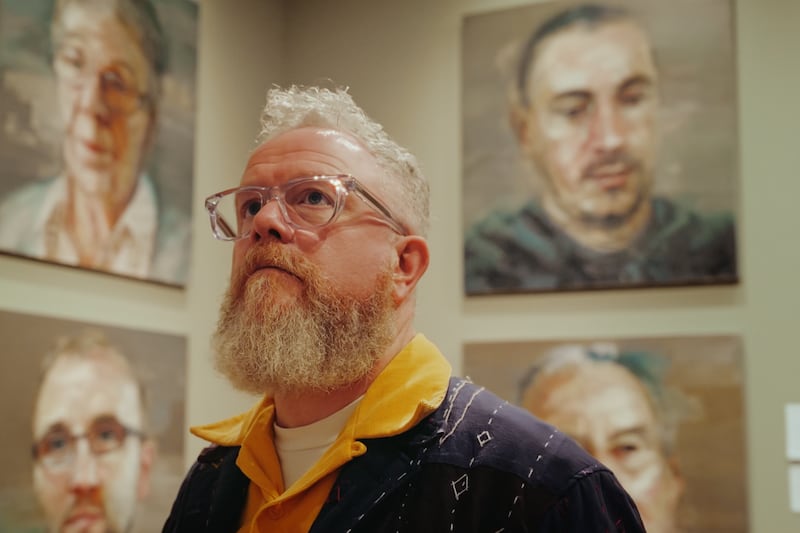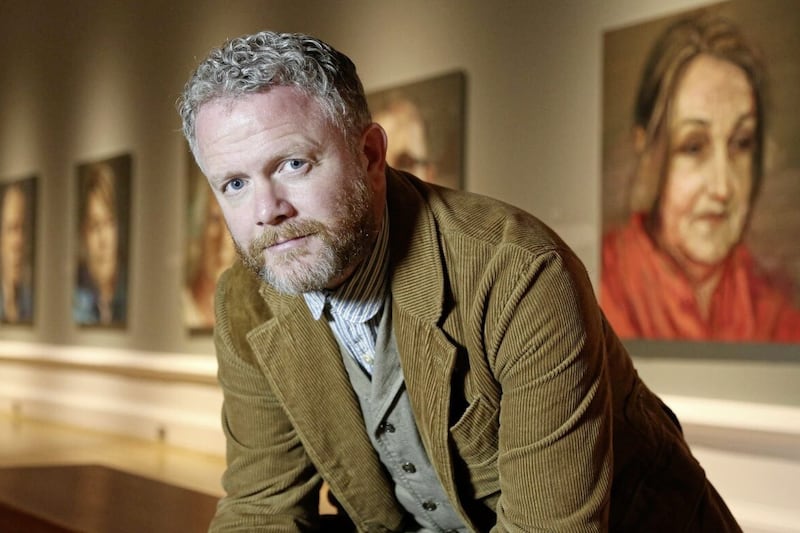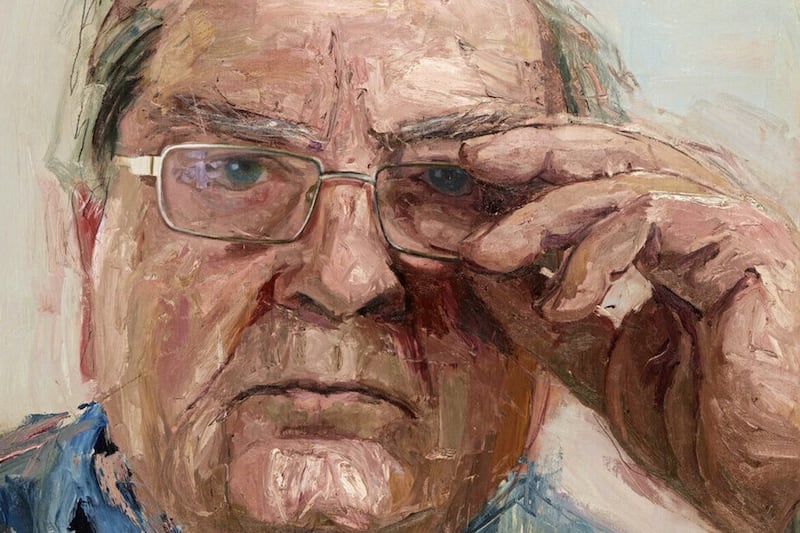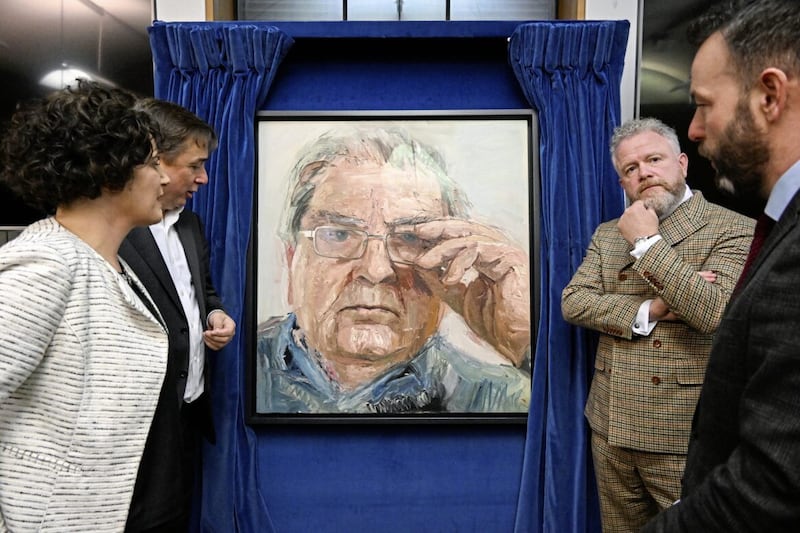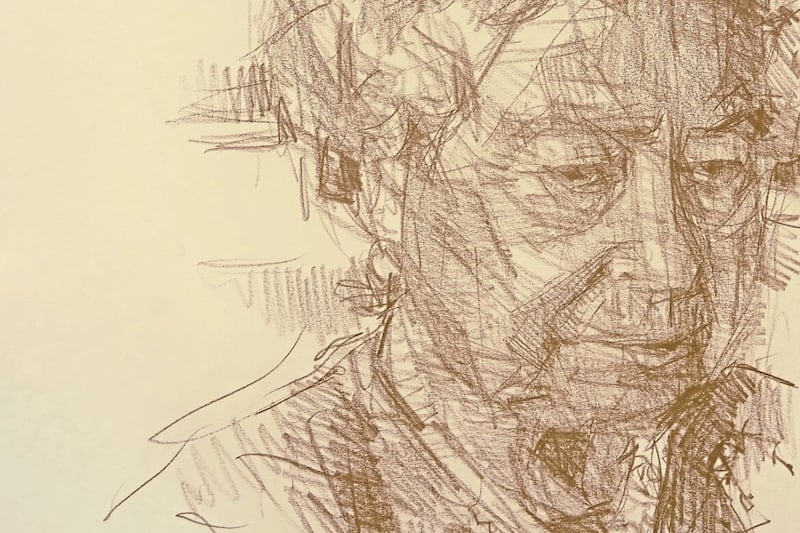HOLDING a retrospective might unnerve some artists. Not Colin Davidson whose backwards-looking show, Selected Paintings 1986-2022, at the FE McWilliam Gallery in Banbridge is also forward-looking.
"No, it's not ageing," insists the 53-year-old. "It's made me aware of a natural progression in the work and there are hints of what might be to come. I'd like to do the same thing in 20 or 30 years."
The artist probably best known for his portraits started out painting urban landscapes. A range of tributes to Belfast occupy the first third of the show and in a way, these are portraits too.
"Yeah, that's completely correct," he says. "It is really interesting how I have mapped the city, which is a living, breathing thing, over the years."
The first painting, Derelict Belfast Street (1986), shows a boarded up row of houses. Yet the palette is warm, even tender, with a lot of pink, so the terrace looks almost pretty.
"I was seventeen and it was a run-down old street that was about to be knocked down. That was how the city looked back then," he says.
"But although I painted what was really there, I wanted to give it an importance, a dignity."
At one of the private views, a friend of Davidson's exclaimed at the skill in the small canvas.
Next to it is a big painting, Scrabo from the Europa, Belfast (2003-2004). The familiar view, with the Crown Bar in front of you, has changed, becoming lighter, dreamlike. The colour of the old gin palace isn't brown, but pale cream and green.
Davidson comments on the technique: "Although there's 20 years' difference between the paintings, they're sort of linked. It's something you fall into with weird perspective."
When it came to getting a vantage point to paint Queen's University, the artist used a drone for the first time: "Normally I'd be up above the view but there was nowhere to ground myself. So I contacted a drone expert who took a few shots."
The resulting view of Lanyon's majestic glasshouse and Queen's red brick buildings is affectionate. Yet Davidson points out that he retains an accuracy in regard to buildings, the built environment and the foliage which softens the edges of some of his paintings of Belfast.
"I try to be topographically correct," he says.
"These are my views instead of a painting with fluffy clouds and sheep in fields. It's my Irish landscape."
One sequence of canvases, many in acrylic rather than oil, that leaves out the fluffy clouds is Davidson's work on streets in London and Belfast.
Interestingly, the two cities blur: the speed, interaction in cafés, and sense of life lived at a fast pace is the same. Stylistically, Davidson has included a lot of glass windows and shop fronts.
"The subject wasn't the street so much as the sheet of glass which could be the same in different places. I was capturing the refracted (view) through a sheet of glass."
He adds that there's a frantic aspect to the pictures. The whizz of a big city encompasses Leicester Square and a recognisable cash point behind the City Hall at Donegall Square South. Among the scenes is Malone, a blue of primary colours with the outline of a bus, suggesting speed.
Then you encounter one of Colin Davidson's new 3D portraits of himself. It's slightly startling because of the scale, but also noble for the same reason, and boxed in a wooden frame. There's a thoughtfulness, maybe even a touch of sadness in the big blue eyes.
Davidson counters this: "That's your view, everybody brings something of themselves to art. The viewer completes the painting in his or her own way but this is the opposite of an ego-trip."
There is also, naturally, a section of the gallery devoted to Colin Davidson's trademark scaled-up portraits. He began working in this format when he painted Duke Special, and the 2010 painting is here. The musician gazes off centre in a visionary manner.
Not far away is Davidson's portrait of Queen Elizabeth. You can't help wondering if it is tougher capturing a sitter in paint who has done this many times before and knows the form.
"We all have protective facades in public but I was privileged to see behind it," explains Davidson.
"I asked for two hours and the Palace were really surprised at how long I wanted as some artists go in and take photos to use. But I like to see how people move when they're talking.
"You have to get a good likeness too, and this is a woman with one of the most famous faces in the world."
The result is superbly recognisable. Two preliminary sketches, one in crayon showing a serious woman, the other a smiling face, are as appealing as the incredible drawings by Renaissance masters in the Buckingham Palace collection.
There's a hall of fame nearby made up of preliminary sketches of the great and the good that Davidson has immortalised, with Brad Pitt, Edna O'Brien and Ciarán Hinds in the line-up.
The Irish actor looks distinctive here. Davidson says: "There's something ancient, that is Greek or Roman, about Ciarán Hinds, a unique, rather wonderful, beautiful appearance.
"You assume things about a person as a result but when I met him I found him to be a nice, interested person."
Among the heroes Davidson has pinned down on canvas is Seamus Heaney, looking bardic and facing up to the final chapter: "I'd loved his poetry since childhood and it was a privilege to paint him. He even made us a cup of tea. Sadly, this turned out to be his final portrait."
Another face seeming aware of time passing is that of artist Basil Blackshaw. "He was somebody I admired," says Davidson. "This shows him in the last years of his life."
The span of the show by the newish Chancellor of the University of Ulster is fulfilling and registers time passing, in people and places.
Dr Riann Coulter, head of the FE McWilliam Gallery and Studio and co-curator of the show alongside Kim Mawhinney, senior curator at National Museums NI, says: "I think of Colin as a storyteller. When Kim, who is close to the artist, and I were planning the exhibition, we had to decide which stories we wanted to tell."
They felt Davidson's celebrated Troubles portraits, Silent Testimony, had had good coverage and taken the Northern Irish narrative abroad.
"So we concentrated on the landscapes, and some portraits," she says. "I wouldn't say there's a romantic approach exactly but there is a softness."
:: Colin Davidson: Selected Paintings 1986-2022 runs at the FE McWilliam Gallery and Studio, Banbridge until September 10. femcwilliam.com, 028 4062 3322.



